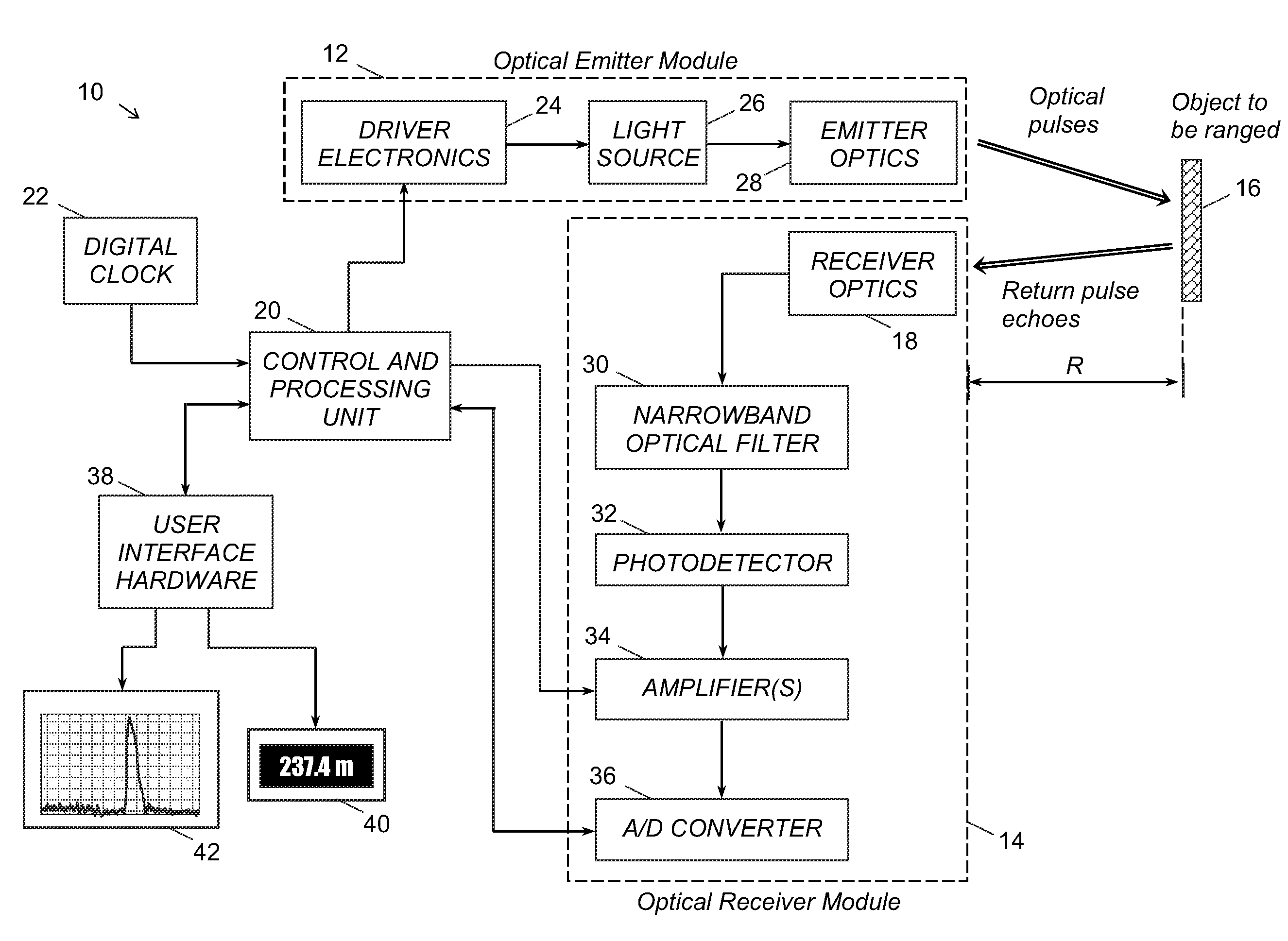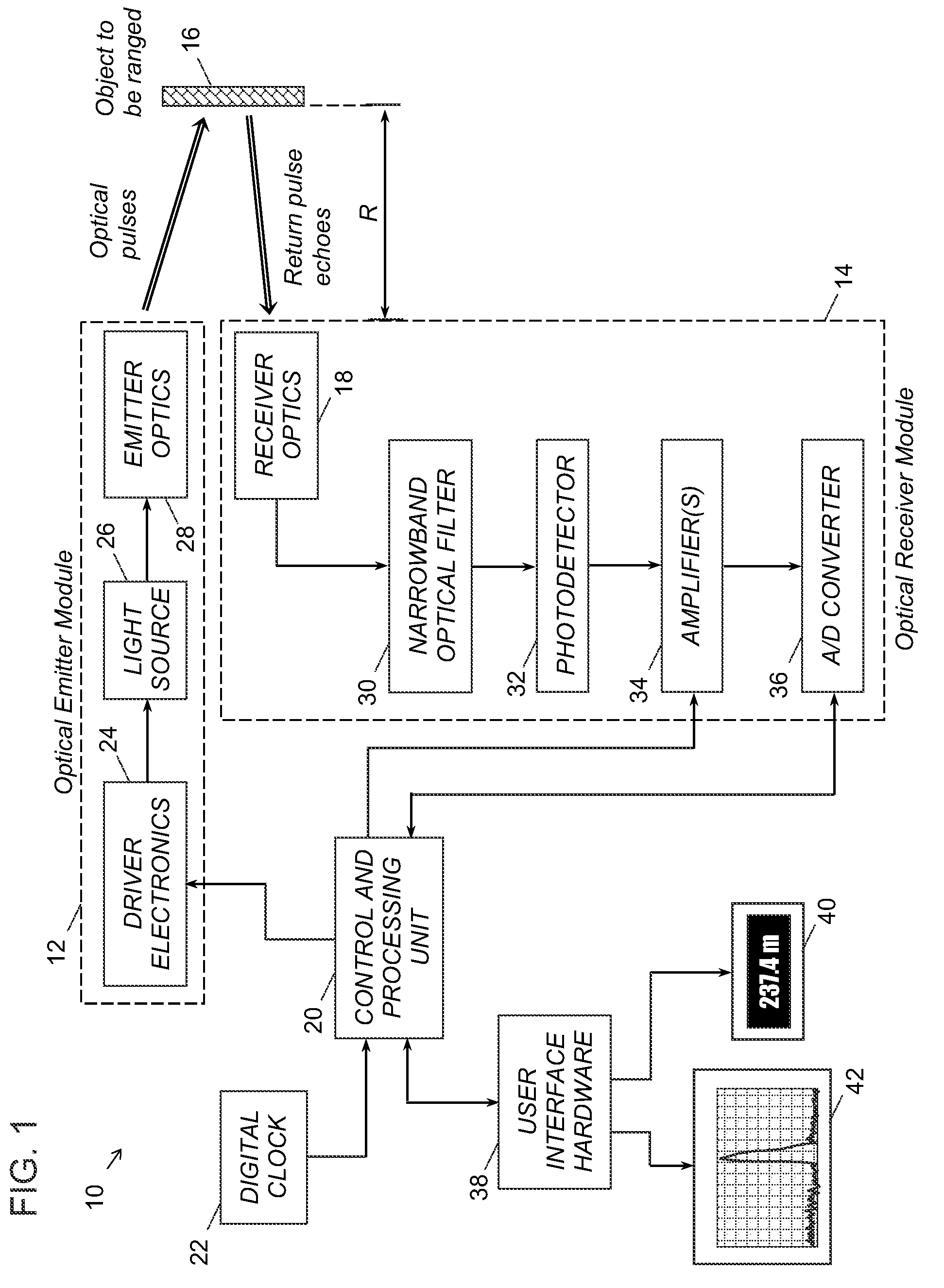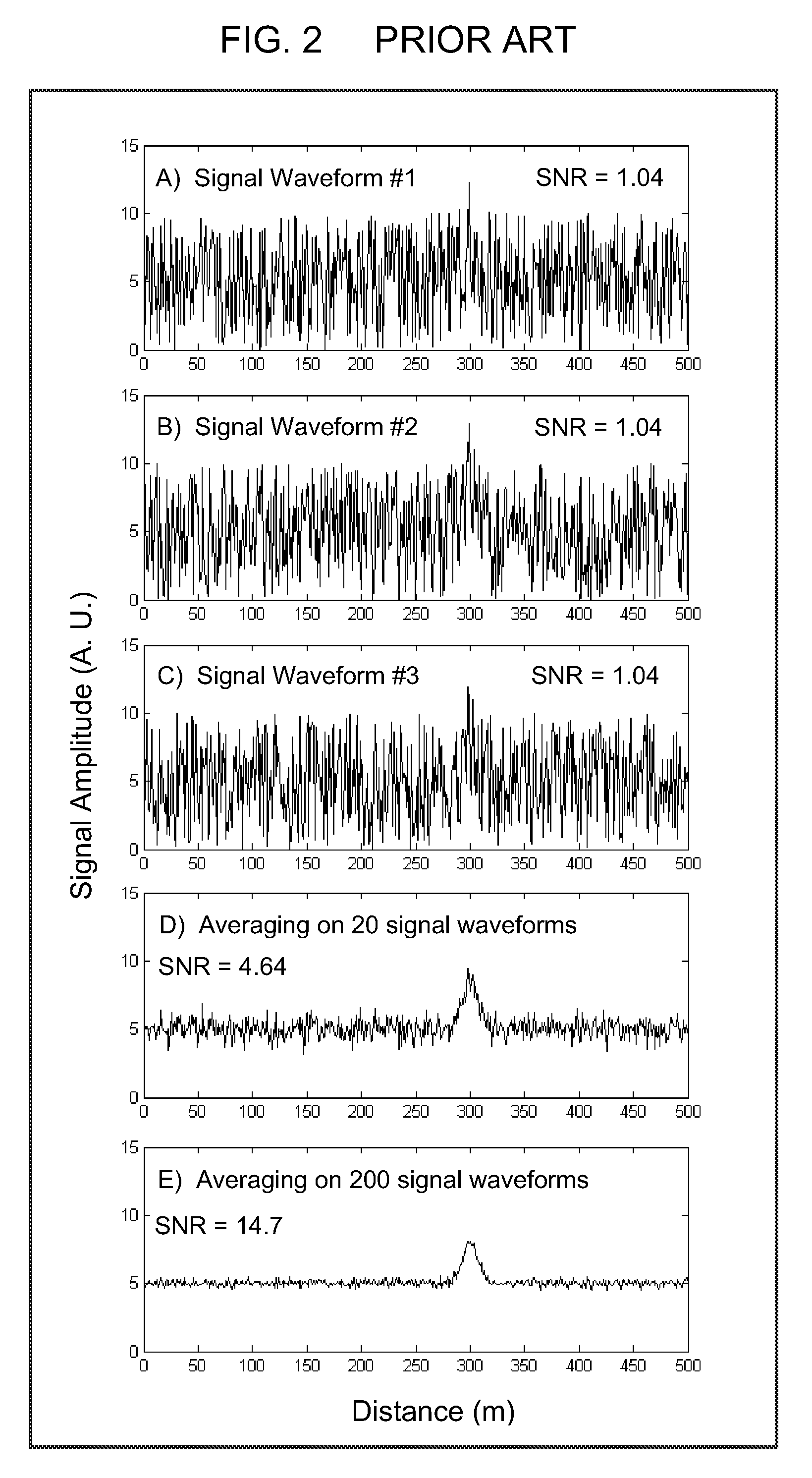Digital signal processing in optical systems used for ranging applications
a digital signal processing and optical system technology, applied in noise figure or signal-to-noise ratio measurement, distance measurement, instruments, etc., can solve the problems of relative simplicity of analog electronic design at the expense of performance and flexibility, output, and experienced users cannot always be aware of false range measurement events, etc., to achieve the effect of more efficien
- Summary
- Abstract
- Description
- Claims
- Application Information
AI Technical Summary
Benefits of technology
Problems solved by technology
Method used
Image
Examples
Embodiment Construction
General Overview of a Digital Rangefinder
[0036]The various embodiments of the invention described below are intended for implementation in an optical rangefinding apparatus with digitization of the received signal waveforms. The basic elements of a digital rangefinder 10 can be better appreciated by referring to the schematic block diagram depicted in FIG. 1. The instrument comprises an optical emitter module 12 for emission of a train of optical pulses having predetermined characteristics, and an optical receiver module 14 for the capture and pre-processing of the return signal waveforms. The signal waveforms originate from the fraction of the emitted optical pulse energy that is reflected or backscattered by the object 16 located at range R from the rangefinder 10, and which is in the field of view of the receiver optics 18. A control and processing unit 20 controls the operation of both optical emitter 12 and optical receiver 14 modules. Among other things, the control process sy...
PUM
 Login to View More
Login to View More Abstract
Description
Claims
Application Information
 Login to View More
Login to View More - R&D
- Intellectual Property
- Life Sciences
- Materials
- Tech Scout
- Unparalleled Data Quality
- Higher Quality Content
- 60% Fewer Hallucinations
Browse by: Latest US Patents, China's latest patents, Technical Efficacy Thesaurus, Application Domain, Technology Topic, Popular Technical Reports.
© 2025 PatSnap. All rights reserved.Legal|Privacy policy|Modern Slavery Act Transparency Statement|Sitemap|About US| Contact US: help@patsnap.com



